
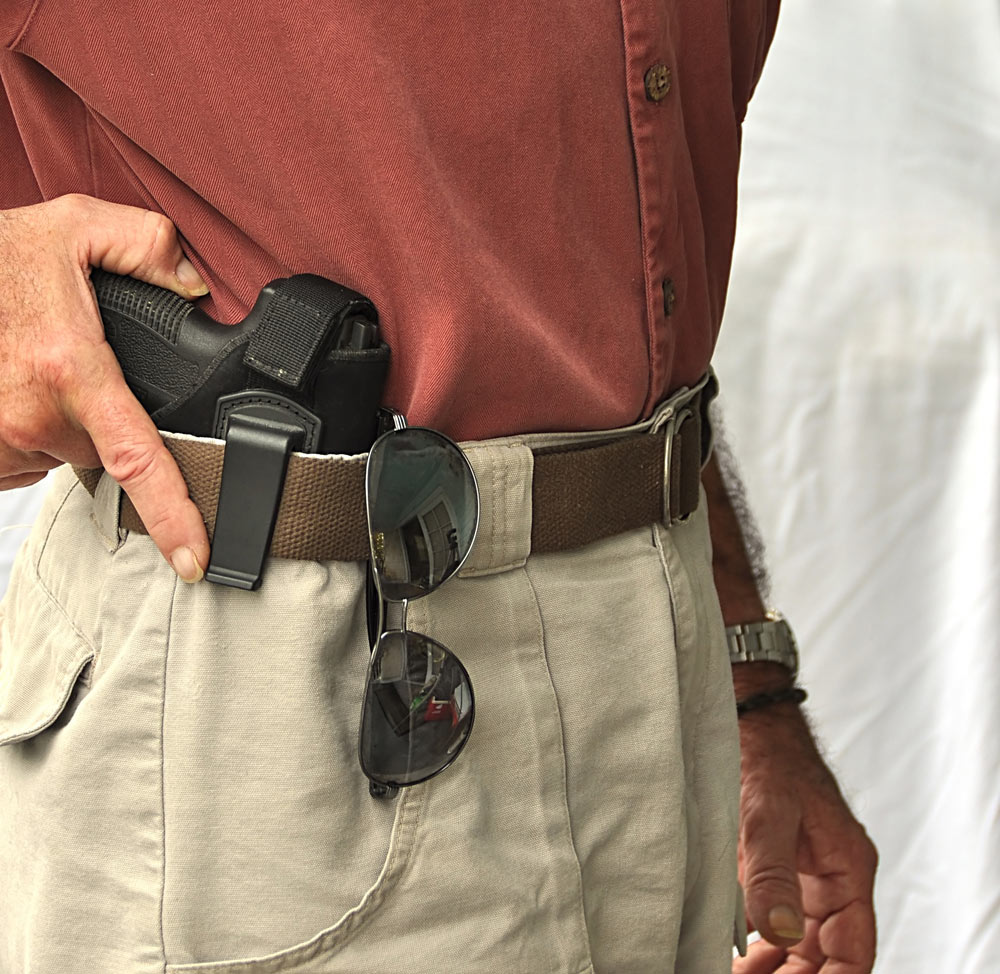
Wielding a combat handgun effecitively is no mystery, simply put these five fundamentals into practice to master your self-defense sidearm.
What Are The Five Lost Secrets To The Combat Handgun:
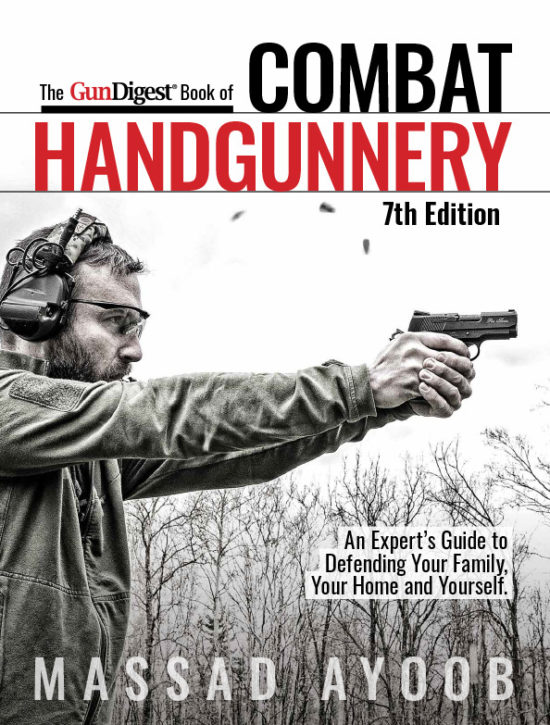
There are secrets the Old Masters of combat handgunning knew, secrets that have been lost to most because they weren’t incorporated into this or that “doctrine.” Just because they are lost doesn’t mean they don’t still work. Let’s look at a few of them.
Combat Handgun Secret #1: The Power Stance
In true combat handgun training, as opposed to recreational shooting, you are preparing for a fight. This means you should be in a fighting stance. Balance and mobility can never be compromised in a fight. Accordingly, your primary shooting stance should be a fightghting stance.

When the body has to become a fighting machine, the legs and feet become its foundation. You can expect to be receiving impacts: a wound to the shoulder, a bullet slamming to a stop in your body armor, and certainly the recoil of your own powerful, rapidly fired defensive weapon. Any of these can drive you backward and off-balance if you are not stabilized to absorb them and keep fighting. The feet should be at least shoulder-width apart, and probably wider.
Whether you’re throwing a punch or extending a firearm, you’re creating outboard weight, and your body has to compensate for that by widening its foundation or you’ll lose your balance. We have long known that humans in danger tend to crouch. It’s not just a homo sapiens thing, it’s an erect biped thing. The same behavior is observed in primates, and in bears when they’re upright on their hind legs.
In his classic book “Shoot to Live,” Fairbairn observed how men just on their way to a dangerous raid tended to crouch significantly. Decades before Fairbairn had noticed it, Dr. Walter Cannon at Harvard Medical School had predicted this. Cannon was the ?rst to attempt to medically quantify the phenomenon called “fight or flight response” as it occurs in the human. While we know now that Cannon may have been incorrect on some hypothesized details, such as the exact role that blood sugar plays in the equation, we also know that on the bottom line he was right on all counts.
When threatened with deadly danger, the erect bipedal mammal will turn and face that danger, if only to observe and quantify it before fleeing. Its torso will square with the thing that threatens it. One leg will “quarter” rearward. This is seen today in the boxer’s stance, the karate practitioner’s front stance, the Weaver stance of pistol shooters, and the “police interview stance” taught at every law enforcement academy.
The head will come forward and down, and the shoulders will seem to hunch up to protect it. The knees will flex, lowering the center of body gravity, and the hips will come back, coiling the body for sudden and strenuous movement. The feet will be at least shoulder-width apart laterally. The hands or paws will rise to somewhere between waist and face level. This, and not the exaggerated “squat” of the ancient FBI training films, is the true and instinctive “combat crouch.”
The body is balanced forward, rearward, left and right, its weight forward to both absorb and deliver impact. There is no good reason for the combat shooter not to stand like this. Indeed, there is every reason for him or her to do it.
A key element of the power stance as we teach it at Lethal Force Institute is the application of the drive leg. In the martial arts, you generate power in a punch by putting your whole body behind it. Whichever leg is to the rear is the drive leg. Beginning with the knee slightly flexed, the practitioner digs either the heel or the ball of the foot into the ground, straightening the leg. This begins a powerful turn of the hips.
The hips are the center of body gravity and the point from which body strength can most effectively be generated. The punch and extending arm go forward along with the hip. The forward leg has become the weight-bearing limb; it needs to be more sharply flexed than the rear leg because as force is delivered forward, it will be carrying well over half of the body’s weight.
Learn From The Master–Massad Ayoob:
- Self Defense: When A Trigger Upgrade Becomes A “Hair Trigger”
- Concealed Carry: Point Shooting Vs Aimed Fire
- Self-Defense: Are Warning Shots a Good Idea?
- Is Hollowpoint the Best Defensive Ammo for Concealed Carry?
- Should You Carry a Back-Up Gun?
- 6 Bad Excuses to Not Carry Spare Ammo
Combat Handgun Secret #2: The High-Hand Grasp
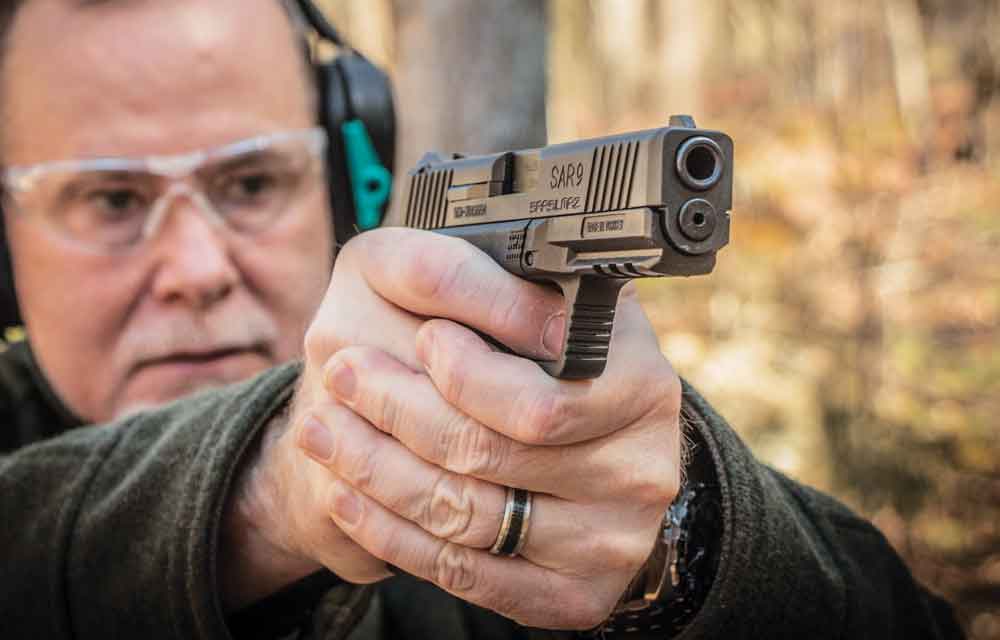
It’s amazing how many people come out of shooting schools and police academies not knowing the most efficient way to hold a handgun.
The primary hand’s grasp, which some instructors call “Master Grip,” needs to be able to stand by itself. In a shooting match that calls for a two-handed stage, we know we’ll always be able to achieve the two-fisted grasp.
In the swirling, unpredictable movement that occurs in close-range fights, however, we can never be sure that the second hand will be able to get to its destination and reinforce the first. It might be needed to push someone out of the way, to ward off the opponent’s weapon, or simply to keep our balance.
That’s why the initial grasp of the handgun with the dominant hand must be suitable for strong control of one-handed as well as two-handed fire.The hand should be all the way up the backstrap of the grip-frame. With the auto, the web of the hand should be so high that it is not only in contact with the underside of the grip tang, but pressed against it so firmly that it seems to shore up a ripple of flesh.
On the revolver, the web of the hand should be at the highest point of the grip-frame’s backstrap. There is only one, easily fixed potential downside to a high hand grip. If the grip tang has sharp edges, as on the older versions of the 1911, this can dig painfully and even lacerate the hand. Sharp-edged slides on very small autos, like the Walther PPK, can do the same. Simply rounding off sharp edges or installing a beavertail grip safety fixes that.
Now let’s count up the many advantages of the high-hand grip. (1) It lowers the bore axis as much as possible, giving the gun less leverage with which to kick its muzzle up when recoil hits. (2) It guarantees that the frame will be held as a rigid abutment for the auto’s slide to work against. With too low a hold, the whipsaw recoil that follows moves the frame as well as the slide, dissipating some of the rearward momentum needed to complete the cycle.
The result is often a spent casing caught “stovepiped” in the ejection port, or a slide that does not return fully to battery. (3) On most handguns, this grasp allows a straight-back pull of the trigger. If the gun is grasped too low, a rearward pull on the trigger becomes a downward pull on the gun, jerking its muzzle – and the shot – low. Draw is hastened because (4) the grip tang of the auto is the easiest landmark for the web of the hand to find by feel.
Pick up a gun magazine with one or more stories on action shooting championships, and watch how the winners hold their guns. The webs of their hands will be riding high. Now you know why. The champions know what so many other shooters have missed.
Combat Handgun Secret #3: The Crush Grip
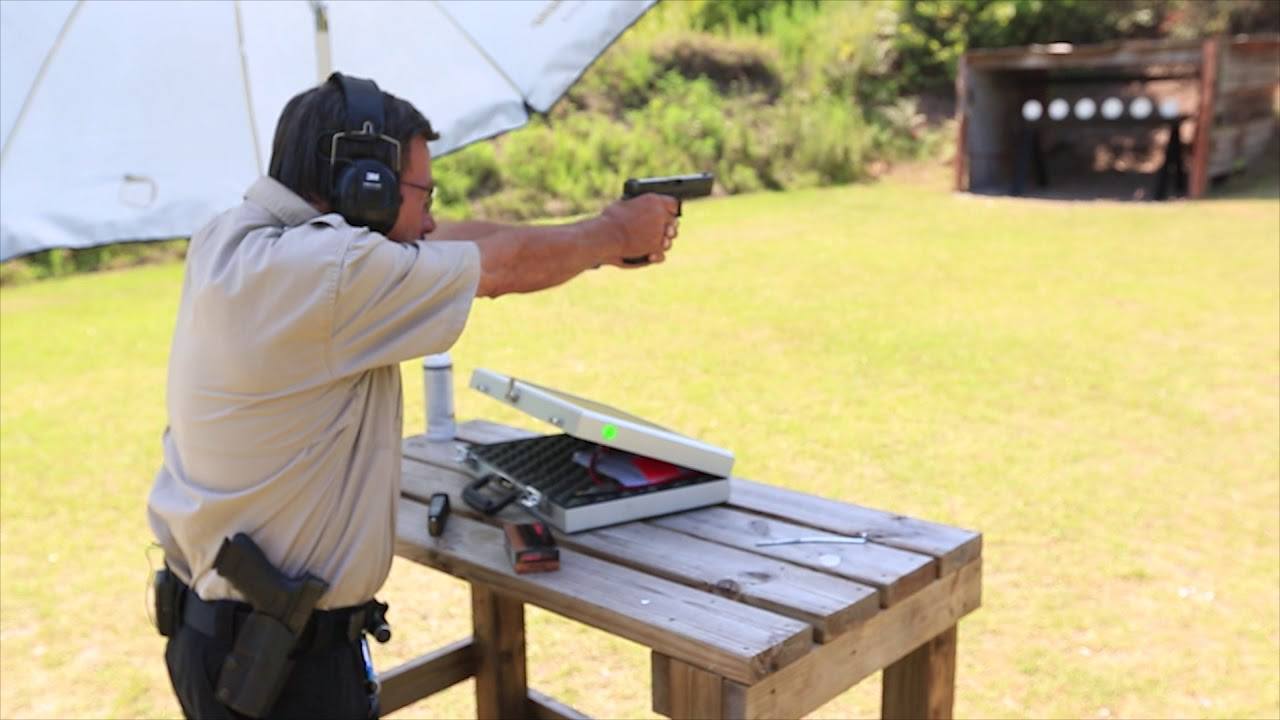
In target pistol shooting, light holds are in vogue. The bull’s-eye shooter is taught to let her pistol just rest in her fingers with no real grasp at all as she gently eases the trigger back. The IPSC shooter is taught to apply 60 percent strength with the support hand and 40 percent with the firing hand (occasionally the reverse, but 50 percent of available hand strength in any case).
Common sense tells us this will not do for a fight. For one thing, it is dexterity intensive, and dexterity is among the first things we lose in a fight-or-flight state. For another, the genuine fight you are training for always entails the risk of an opponent attempting to snatch your gun away.
We know that action beats reaction. If you’re holding your handgun lightly or with only half your strength and it is forcibly grabbed or struck, it will probably be gone from your grasp before you can react. But if you have conditioned your hand to always hold the gun with maximum strength, you have a better chance to resist the attack long enough to react, counter with a retention move, and keep control of your firearm.
A third tremendous advantage of a hard hold, one that world champion Ray Chapman always told his students, is that it’s the ultimate consistency in hold. “40 percent hand strength” is one thing in the relatively calm environment of the training range. It’s something else when you’re at a big match shooting for all the marbles, and it’s something a league beyond that when you’re fighting for your life.
One effect of fight or flight response is that as dexterity goes down, strength goes up precipitously. Even in target shooting, marksmanship coaches agree that a consistent hold is a key element of consistent shot placement. There are only two possible grasps that can be guaranteed to stay truly consistent: no pressure at all, or maximum pressure.
A fourth big advantage for the crush grip is that it prevents “milking.” When one finger moves, the other fingers want to move with it. The phenomenon is called “interlimb response.” As the trigger fingers tighten, so do the grasping fingers, as if they were milking a cow’s udder, and this jerks the shot off target, usually down and to one side. But if the fingers on the gripframe (NOT the trigger finger!) are already squeezing as hard as they can, they can’t squeeze any more when the index finger separately pulls the trigger, and milking is thus made impossible.
Finally, the hard hold better controls recoil. If you had me by the throat and were holding me against a wall, and I was struggling, would you relax your grip or hold harder? The harder you hold me against the wall, the less I can move. Similarly, the more firmly you grasp your gun, the less it will move in recoil, in terms of both overall gun movement and the stocks shifting in your hand.
Detractors of the concept call this “gorilla grip,” and warn that it interferes with delicate movement of the trigger finger and can cause small tremors. Those of us who advocate crush grip answer, “So what?” Delicate manipulation of the trigger disappears once the fight is on. The hands are going to tremble under stress anyway, and the shooter might as well get used to it up front in training. If the sights are kept in line, the gun’s muzzle won’t tremble off a target the size of a human heart.
Combat Handgun Secret #4: Front Sight
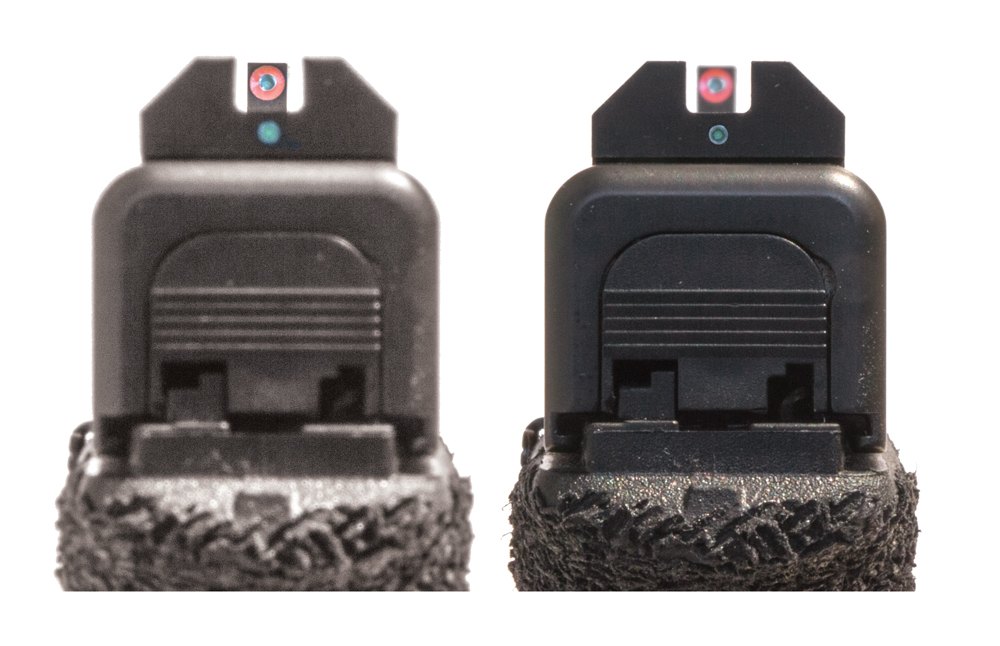
Every marksman who is accomplished with open sights remembers the day he or she experienced “the epiphany of the front sight.”
The phrase “watch your front sight” doesn’t mean just have it in your field of view. It doesn’t mean just be aware of it. It means focus on it as hard as possible, making sure it’s on target, and that it’s not moving off target as you stroke the trigger.
Pistol champions and gunfight survivors alike have learned that this is the key to center hits at high speed under pressure. As discussed in the chapter on point shooting, you don’t need the perfect sight picture of the marksmanship manual. But remember that the handgun is a remote control drill, and it must be indexed with where we want the hole to appear, or the hole will appear in the wrong place. The sights, at least the front sight in close, will be the most reliable such index.
Combat Handgun Secret #5: Smooth Roll
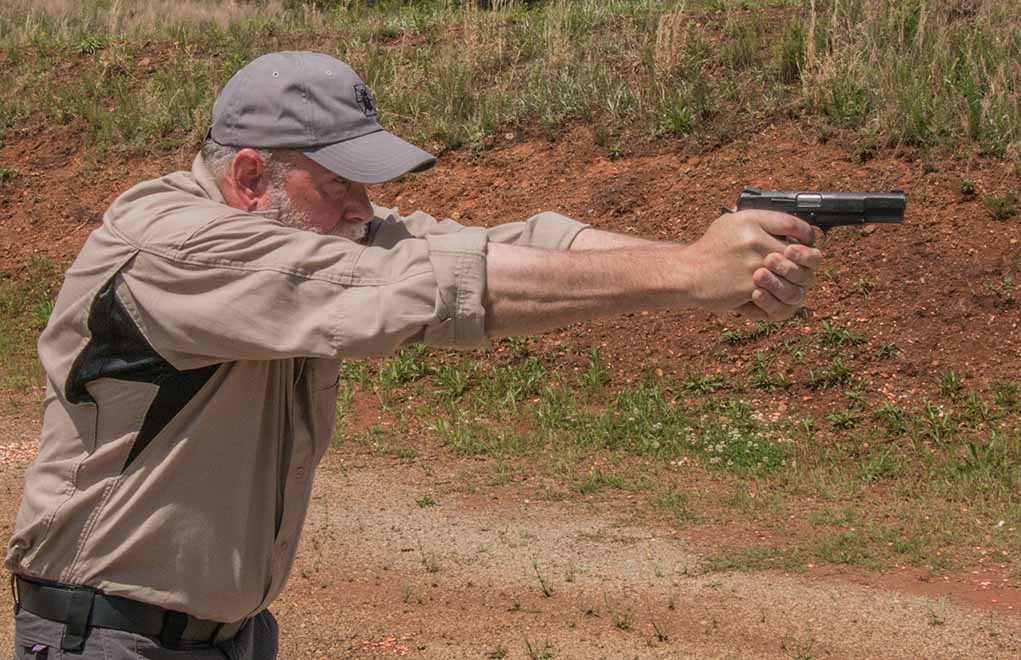
A smooth, even, uninterrupted roll of the trigger, as discussed in the last chapter, is critical if the shooter is going to break the shot without jerking it off target. Note that the last two elements, “front sight” and “smooth trigger roll,” are not listed as “to the lines of secrets four and five, prior.” This is because it’s debatable whether they are really lost secrets, and if so, who lost them.
Every competent instructor will teach the students how to use the sights and how to bring the trigger back. The problem is, these things are very easy to forget until the student develops the discipline to first think about doing them, and then finally ingrain the concepts through repetition so they are done automatically.
Power stance. High hand. Crush grip. Front sight. Smooth roll. I try to go through it in my mind like a pre-fiight checklist before I even reach for the gun. You don’t even have to think about it all at once.
As soon as you know there may be a stimulus to draw the gun, slip into a power stance. It might be a thug giving you the bad eye as you wait for a bus, or it might be that you’re on the range awaiting the “commence fire” signal. If you’re in the position to start, you don’t have to think about it any more.
Condition yourself to always begin the draw by hitting the high hand position. Once it’s there, it’s done and you don’t have to think about it any longer.
Crush grip? I tell my students to think of the eagle’s claw. When the eagle sleeps, it does not fall from its perch because its claws automatically clutch it with a death grip. If we condition ourselves to do this whenever we hold the gun, it’ll happen on its own when we need it without us having to think about it.
Editor's Note: This excerpt is from Massad Ayoob's Gun Digest Book of Combat Handgunnery, 7th Edition, now at GunDigestStore.com.

Next Step: Get your FREE Printable Target Pack
Enhance your shooting precision with our 62 MOA Targets, perfect for rifles and handguns. Crafted in collaboration with Storm Tactical for accuracy and versatility.
Subscribe to the Gun Digest email newsletter and get your downloadable target pack sent straight to your inbox. Stay updated with the latest firearms info in the industry.

![Best Concealed Carry Guns In 2025 [Field Tested] Wilson Combat EDC X9S 1](https://gundigest.com/wp-content/uploads/Wilson-Combat-EDC-X9S-1-324x160.jpg)


![Best 9mm Carbine: Affordable PCCs [Tested] Ruger Carbine Shooting](https://gundigest.com/wp-content/uploads/Ruger-Carbine-Shooting-100x70.jpg)
![Best AR-15: Top Options Available Today [Field Tested] Harrington and Richardson PSA XM177E2 feature](https://gundigest.com/wp-content/uploads/Harrington-and-Richardson-PSA-XM177E2-feature-100x70.jpg)

[…] Source: https://gundigest.com/article/tactical_combathandgunsecrets […]
[…] post 5 Lost Secrets Of The Combat Handgun appeared first on Gun […]
[…] 5 Lost Secrets Of The Combat Handgun […]
The article makes some good points about the difference between range/competition shooting, and training for an actual gunfight. I also liked the fact that the author points out how quickly things happen in a gunfight, leaving you very little time to consider your stance and grip. It has to be muscle memory.
But he lost some credibility very early on when he said “When the body has to become a fighting machine, the legs and feet become its foundation. You can expect to be receiving impacts: a wound to the shoulder, a bullet slamming to a stop in your body armor . . .”
I don’t know about you, but I prefer not to be standing in one spot waiting to see if my stance can support me as I am hit by incoming fire. Getting shot in the shoulder is one thing, but a round to the forehead is something else entirely. Whether in training or in the real thing (and I have been there), your stance should be one that allows you to move and shoot accurately. If you are tactical training that does not at some point emphasize a flexible stance that allows stable movement, you are not getting good training. Yes, initial training should emphasize grip and accuracy, but once you are past the K-5 stage of training, you should be learning to move, use cover and shoot.
[…] post 5 Lost Secrets Of The Combat Handgun appeared first on Gun […]